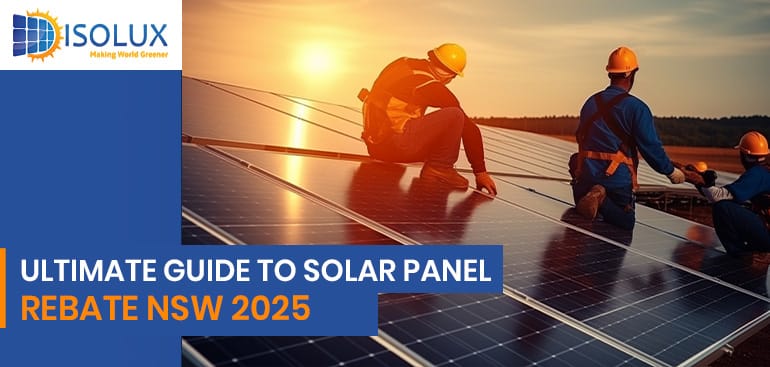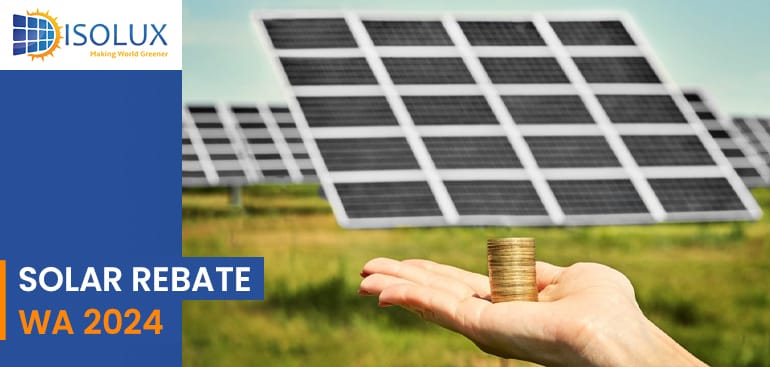Embracing solar energy not only aligns with environmental goals but also opens the door to enticing rebates offered by the Australian Government and manufacturers. Let’s get into the details of solar rebates, covering up-front incentives, ongoing benefits, and additional schemes that can maximize your solar investment.
Up-Front Solar Rebates
The Australian Federal Government, committed to carbon-neutral goals, implements the Small-Scale Renewable Energy Scheme. Central to this scheme are Small-Scale Technology Certificates (STCs), which are virtual tokens representing the solar system’s ability to generate one-megawatt hour of energy over 14 years.
What is an STC?
A small-scale technology certificate (STC) serves as a virtual token symbolizing a solar system’s capacity to generate one megawatt-hour of energy over a standard 14-year period. The Australian Government has committed to acquiring these certificates as a recognition of the clean energy being generated.
The STC program, established in 2011 and continuing until 2030, compensates installers based on the climate zone where they install. The nation is divided into four zones according to sunlight duration and intensity. Additionally, solar panel installers are rewarded based on the size and efficiency of the solar system they install. In other words, the greater the potential of a system to produce megawatt-hours, the more STCs will be assigned to the installer.
Also read: Everything Important You Need To Know About STCs
How are STCs Traded?
Installers receive the STCs and trade them with a third-party company like GreenDeal. This third-party company, equipped with intelligent software, ensures compliance with the Small-Scale Renewable Energy Scheme. The up-front rebate is provided to customers through this trading process.
STC Qualification Criteria
1. Creation of certificates within 12 months of solar system installation.
2. Inverter and solar panels sanctioned by the Clean Energy Council.
3. Adherence to local, state, and federal electrical safety regulations.
4. Small-scale qualification with a maximum DC capacity of 100 kilowatts.
5. Conformity to Australian standards.
STC Forecast
The STC price is gradually declining, dropping 7% every January 1st until 2030. Despite the decrease, an up-front solar rebate is secured for the next seven years. Industry experts anticipate potential new clean energy schemes, but the STC rebate remains a significant benefit.
Rebate Swap for Low-Income Households
If the cost of solar seems prohibitive for low-income households, the NSW government offers a Rebate Swap for Solar initiative. This program allows eligible households to swap their existing rebate for a free 3-kilowatt solar system, providing access to top-quality solar power at no cost.
While this initiative puts a hold on the standard $285 low-income energy bill rebate for ten years, the 3kW system offers double the financial benefits.
Ongoing Rebates
Solar Feed-In Tariffs
Feed-in tariffs provide a crucial ongoing solar panel rebate, reimbursing solar system owners for excess energy fed into the grid. Energy providers purchase this excess electricity, offering a significant solar panel rebate on electricity bills.
Feed-in tariffs vary among providers, emphasizing the importance of comparing options. Customers can consult Isolux Solar for personalized advice.
Other Rebates and Incentives
1. NSW Empowering Homes Program
Recognizing the financial constraints faced by low-income households, the NSW government offers a groundbreaking initiative. Eligible households can swap their existing rebate for a free 3-kilowatt solar system. This not only puts a temporary hold on the standard energy bill rebate but also provides a sustainable, cost-free energy solution for the long term.
Isolux Solar, plays a crucial role in facilitating solar panel installations under this initiative, ensuring that Australians get access to quality solar power.
2. Manufacturer Incentives
Reputable manufacturers frequently introduce limited-time rebate schemes. Isolux Solar, committed to partnering with trustworthy companies, ensures customers stay informed about such opportunities.
Solar Battery Rebate Scheme
While STC rebates focus on solar panels, the ACT and the Northern Territory lead the way in implementing battery storage rebates. Although NSW currently lacks a specific solar battery rebate scheme, customers with high electricity consumption or a desire for backup power during blackouts find solar batteries to be a valuable investment.
Monitoring manufacturer incentives remains crucial for making the most of solar panels while awaiting the potential adoption of a solar battery rebate scheme in NSW.
Conclusion
Navigating the landscape of solar panel rebate in Australia requires understanding up-front incentives, ongoing rebates, and potential future schemes. Despite the gradual decline in STC prices, the next seven years offer a secured up-front rebate. Low-income households can leverage the Rebate Swap for Solar initiative, while ongoing feed-in tariffs and other incentives contribute to long-term savings. Stay informed, consult with reputable installers like Isolux Solar, and explore the evolving world of solar rebates for a sustainable and cost-effective energy future.





